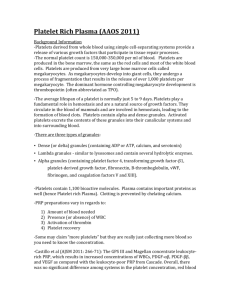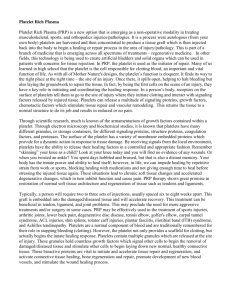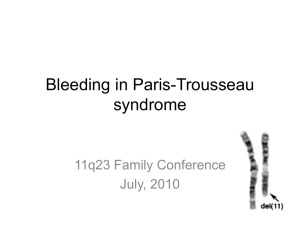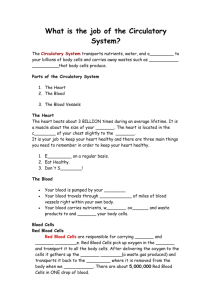APP_36660_sm_SuppInfo
advertisement
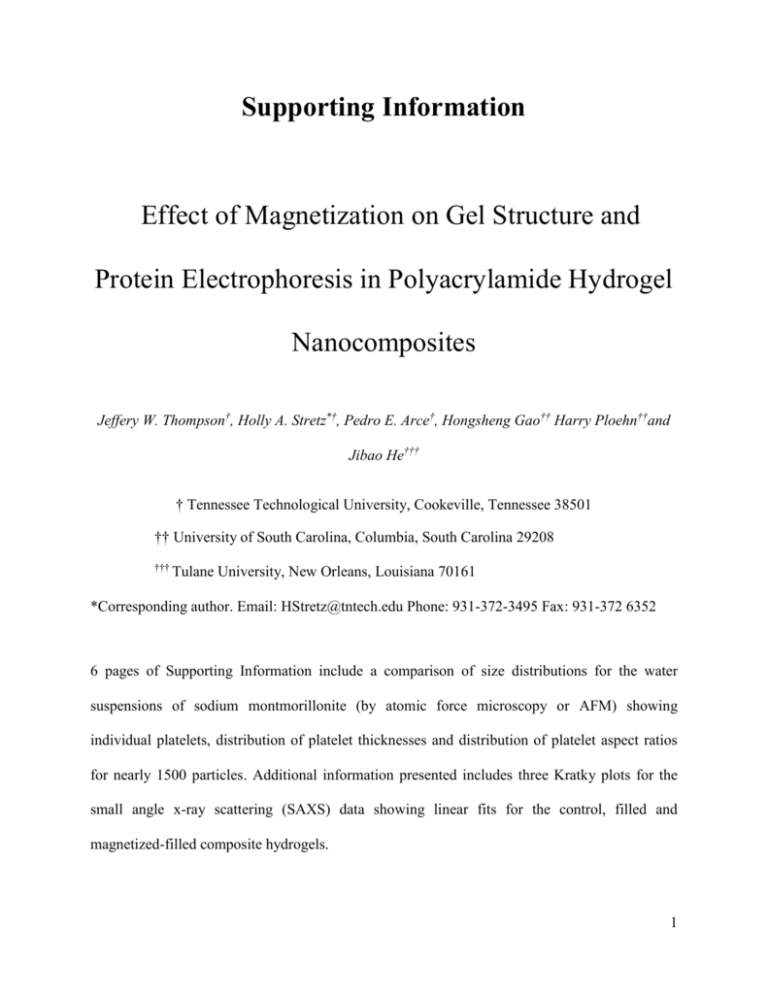
Supporting Information Effect of Magnetization on Gel Structure and Protein Electrophoresis in Polyacrylamide Hydrogel Nanocomposites Jeffery W. Thompson†, Holly A. Stretz*†, Pedro E. Arce†, Hongsheng Gao†† Harry Ploehn††and Jibao He††† † Tennessee Technological University, Cookeville, Tennessee 38501 †† University of South Carolina, Columbia, South Carolina 29208 ††† Tulane University, New Orleans, Louisiana 70161 *Corresponding author. Email: HStretz@tntech.edu Phone: 931-372-3495 Fax: 931-372 6352 6 pages of Supporting Information include a comparison of size distributions for the water suspensions of sodium montmorillonite (by atomic force microscopy or AFM) showing individual platelets, distribution of platelet thicknesses and distribution of platelet aspect ratios for nearly 1500 particles. Additional information presented includes three Kratky plots for the small angle x-ray scattering (SAXS) data showing linear fits for the control, filled and magnetized-filled composite hydrogels. 1 Figure S1. Atomic force microscopy image (left) showing individual MMT platelets. Crosssection analysis of one platelet (green line in left image) yields the height profile (right), indicating a platelet thickness of 1.23 nm. 2 0.25 N = 1468 Mean = 1.29 nm Median = 1.20 nm Frequency 0.2 0.15 0.1 0.05 0 0.6 1.1 1.6 2.1 2.6 3.1 3.6 MMT Mean Platelet Thickness (nm) more Figure S2. Histogram of mean platelet thicknesses based on N=1468 particles from 39 different AFM images. The inset shows a part of one AFM image showing mostly single platelets; the arrows point to two particles that are probably unexfoliated stacks containing two platelets. Discussion: For every individual “particle” in each AFM image, we can measure the vertical dimension relative to the background at every point on each particle. The average value of the vertical dimension is the mean thickness of that particle. Based on the typical lateral dimensions seen in the AFM images (10’s to 100’s of nm) and the median thickness of 1.20 nm, these particles are clearly platelets. The median thickness of 1.20 nm is consistent with the expected thickness of hydrated MMT platelets. About 83% of the particles seen in the AFM images have mean thicknesses between 0.9 nm and 1.5 nm: these are pristine single platelets. If one defines exfoliation as the production of pristine single platelets, we would say that this sample is 83% exfoliated. About 15% of the particles have mean thicknesses between 1.6 and 2.5 nm. Typically, these are single platelets with all or part of a second platelet on top (see inset of Figure S2). Even pristine single platelets are often observed to have small fragments somewhere on their top surface. If the second platelet fragment is large, it may cover most of the surface of the first platelet underneath. This can be called a “duplex” stack (two platelets). Strictly speaking, these platelets are not exfoliated. However, we can say that 98% of the MMT in this sample are exfoliated into single platelets or duplex stacks. We do not see a significant incidence of duplex stacks that appear to be created due to the random deposition of one pristine single platelet overlapping part of another single platelet. 3 0.18 0.16 N = 1468 Mean = 159 Median = 142 0.14 Frequency 0.12 0.1 0.08 0.06 0.04 0.02 0 20 80 140 200 260 320 380 MMT Platelet Aspect Ratio 440 500 Figure S3. Histogram of MMT platelet aspect ratio based on N=1468 particles from 39 different AFM images. Discussion: For every individual particle in each AFM image, image analysis gives us the lateral area in nm2. We compute a characteristic lateral length for that particle as the square root of the measured area. The particle’s aspect ratio equals the characteristic lateral length divided by the mean thickness of that individual particle. In this way, we can measure the exact aspect ratio of every particle in an AFM image. The distribution of aspect ratios of many particles are shown in the histogram of Figure S3. 4 Figure S4. Kratky plot for control PAAm gel. The linear fit has a correlation coefficient (R2) of 0.916. 5 Figure S5. Kratky plot for filled PAAm/MMT. The linear fit has a correlation coefficients (R2) of 0.917. Figure S6. Kratky plot for magnetized-filled PAAm/MMT gel. The linear fit has a correlation coefficient (R2) of 0.964. 6 Figure S7. Overlay of intensity versus distance for carbonic anhydrase (far right peak) and ovum serum albumin (middle peak) after electrophoresis through magnetized-filled hydrogel of PAAm/MMT, = 2.25 x 10-4. The reproducibility of the result is evident. 7

